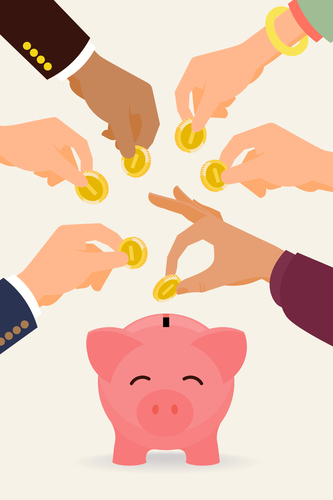Bruce Brammall, The West Australian, 4 May, 2019
It’s March 2021. Covid-19 restrictions have passed. You’ve been back at work for a while. And you’re slowly, but busily, repairing your finances.
During “The Shutdown”, you raided your superannuation. Twice. Took out two lots of $10,000, before and after 30 June, under the hardship provisions.
You did so out of financial fear. Household income had been shattered. Things were looking desperate.
You got through it. But the “super raid” is playing on your mind. You want to repair the damage to your super fund. But how?
The most obvious option is to simply stick it back into super. Get the Bpay details and transfer it in as a “non-concessional contribution”. It wouldn’t be taxed on the way in. You took out $10,000 or $20,000 and you replace it exactly. Apart from market movement while it was in your hands, no-harm no-foul.
But is this the most tax-effective way of doing it?
For most, no.
Many Australians will be better off putting the money back into super by collecting a tax deduction for doing so.
That is, you could get $10,000 back into super, but only give up closer to $7000 of your own after-tax income.
And, depending on your marginal tax rate, receive a tax return of as much as $9400 (for $20,000).
“Whaaat? The government’s not that stupid, are they?”
No. But there’s a Mack truck-sized loophole they can’t do anything about. So long as you didn’t lie to get the money out of super originally, it’s just part of the cost to government tax revenue of this measure.
Okay. How?
Let’s start by assuming you took out $10,000 out and want to put back in exactly $10,000. If you took $20,000, do the same thing two years running.
Sadly, this doesn’t work as well for those earning less than $37,000 a year.
If you want to put in $10,000 into super tax effectively, you actually need to put in $11,764.70. Why? Because if you tax $11,764.70 at 15 per cent (the super contributions tax rate), you end up with $10,000.
However, if you make a “personal deductible contribution”, you will get a tax deduction for that $11,764.70.
If you are in the $37,000-$90,000 tax bracket, you get a tax return of 34.5 per cent. If you earn $90,000-$180,000, you get 39 per cent and if you earn over $180,000, it’s 47 per cent.
Someone earning $80,000 will get a tax return of $4058.82. That means they only had to give up $7705.88 ($11,764.70 less 34.5 per cent tax) of after-tax dollars to get $10,000 back into their super fund.
If they earned $120,000, they only had to give up $7176.47 ($11,760.70 less 39 per cent tax). If they earned $200,000, they only needed to give up $6235.29 ($11,760.70 less 47 per cent tax) of after-tax income.
Be aware these contributions are part of your annual $25,000 concessional contributions limit, which includes the 9.5 per cent your employer pays, which makes it harder for higher income earners. They might have to do it over a longer period, or might not be able to do it at all.
It works similarly from a tax perspective, although a slightly different process, to do the same via salary sacrifice.
Take out $10,000 in super tax-free, but only have to put about $7-8000 back in? Well, that spells tax lurk to me.
Most people won’t do it. They will take the money out, never repay it, have vastly inferior retirement savings and be a greater cost to the public through higher age-pension payments.
I shouldn’t say the following. I should gaffa-tape my mouth shut, to stay out of trouble with the ATO. But I’m going to say it anyway.
The following is not financial advice. To anyone. It’s simply shining a flashlight on a coronavirus tax loophole no-one wants mentioned.
What if you had enough savings to get you through a downturn, but qualified for getting access to $10,000 of super, because your hours had been reduced by 20 per cent?
You could potentially use the tax-deductible super contribution rules I’ve mentioned above to do nothing but save tax.
That is, you qualify to pull money out of super. You then want to put the money back into super, tax-effectively, picking up tax returns of $2000-6000 along the way.
Best advice? Don’t take the money out unless you really need to. For most, it will be too hard to pay it back.
Bruce Brammall is the author of Mortgages Made Easy and is both a financial advisor and mortgage broker. E: bruce@brucebrammallfinancial.com.au.
